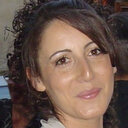Edible Flowers: A Rich Source of Phytochemicals with Antioxidant and Hypoglycemic Properties.
Atslēgvārdi
Abstrakts
Edible flowers are receiving renewed interest as rich sources of bioactive compounds. Ethanol extracts of eight edible flowers were phytochemically characterized and investigated for their bioactivity. Rutin, quercetin, luteolin, kaempferol, and myricetin were selected as standards and quantified by HPLC. The fatty acid profile was analyzed by GC and GC-MS. Antioxidant properties were evaluated by using different in vitro tests. The hypoglycemic effects were investigated via the inhibition of α-amylase and α-glucosidase. Sambucus nigra exhibited the highest radical-scavenging activity (IC50 of 1.4 μg/mL), followed by Hedysarum coronarium (IC50 of 1.6 μg/mL). Both species contained high quercetin and rutin contents. S. nigra extract exerted the highest activity in preventing lipid oxidation. Malva sylvestris extract inhibited both α-amylase and α-glucosidase with IC50 values of 7.8 and 11.3 μg/mL, respectively. These findings support the consumption of edible flowers as functional foods and their use as sources of natural antioxidants by the food industry.




